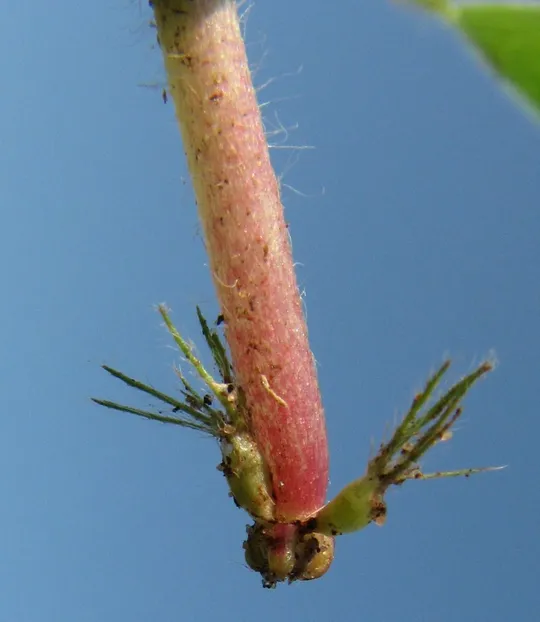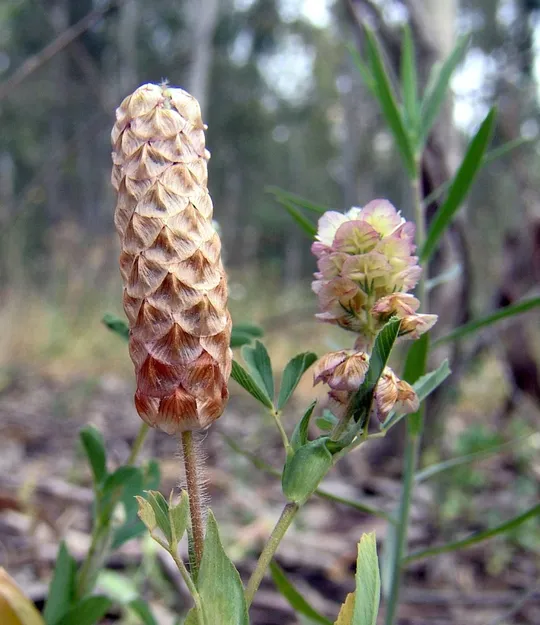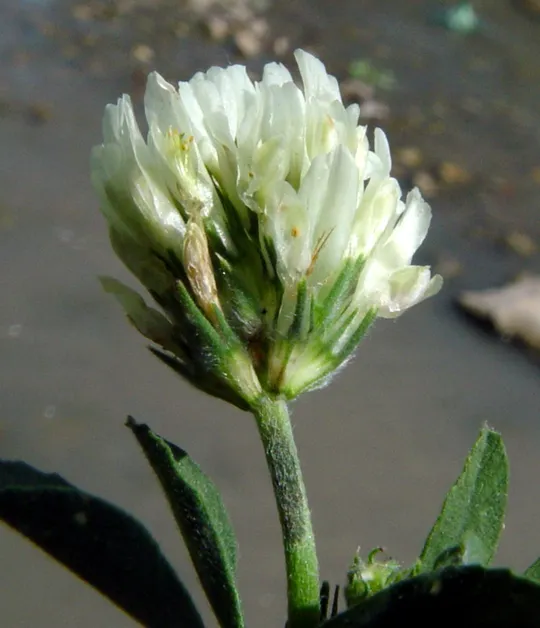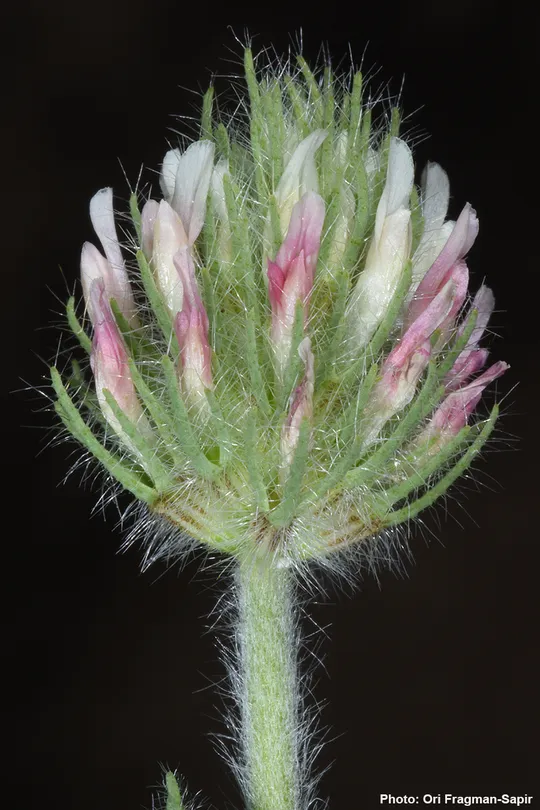Israel Clover
Trifolium israeliticum



Trifolium israeliticum is a preferred fodder species for grazing. Its foliage is rich in nutrients and the nitrogen buds in its roots enrich the soil. In the past this species was used for experimental grazing in the Neve Ya’ar Research Center and attempts were made to acclimatize it as a pasture plant in Australia.
Trifolium israeliticum grows in the
northern Golan Heights, Hula Valley, Upper Galilee, Lower Galilee, and in the
Sharon. A total of ten sites are known sites, although there may be more than
twenty. In the northern Golan it grows on the banks of Zavitan Stream, on Mount
Shifon, east of Tel Asnia and above Kibbutz Shamir. In the Upper Galilee it is
currently found in the Dalton Heights and in Kerem Ben Zimra, but is extinct
from several sites in the region of Safed, Gush Halav, Sasa and Bar’am. In the
Hula Valley it was recorded from the meeting point of the Banias and Dan Streams.
In the Lower Galilee T.
israeliticum is found on Mount Hashabi (Leshner, 2008)
(the site and region are not noted on the attached map). In the Sharon it was observed
in recent years only in the Bney Tsion Nature Reserve and in the Iris reserve in
Netanya, but is extinct in Hadera,
Pardes Hanna, Binyamina, Caesarea and Magdi'el, where it had been collected in
the first half of the 20th century. In the past it also grew in the Lower
Galilee around the Golani Junction-Bet Keshet-Nazareth, and in Ramat Menashe
(Mishmar HaEmek and Dalia), but disappeared from these sites.
Sunny areas of Quercus
ithaburensis open forests, in sparse woodland
and fallow fields in the Mediterranean region.
For the genus –
see Trifolium
filiforme. T.
israeliticum was first described for the first
time in 1927 by Eig as a variety of T. subterraneum.
As stated in the Plant
Description section there are many populations in Israel where the two
"species" are scattered within the same population and look like two
forms of the same taxon.
The Trichocephalum
section in the genus Trifolium, to which T. israeliticum
belongs, has eight species
in Israel, in which a large part of the flower heads are sterile, and their
role is in facilitating fruit dispersal. In six of the species in the group,
such as T. pilulare and T. eriosphaerum,
the sterile
flowers become light woolly hairs, which carry the capitulum in the wind and roll
it far away from the mother plant. Only in two species in the group do the
fertile flower heads
bury themselves in the soil (geocarpy) after their flowers were fertilized
above ground. Geocarpy is fairly common in other legumes in the Mediterranean transition
zone, example e.g. Vicia, Lathyrus and Factorovskya.
·
The number of
regions in which Trifolium israeliticum is found decreased
from six to five. There is also a significant decrease in the number of sites
on which the species grows, particularly in the Lower Galilee, Sharon and Ramat
Menashe a – to less than half of the sites known up to the 1960s.
·
The Sharon habitat
is endangered, probably due to conversion of land to agriculture and the spread
of urbanization on the coastal plain.
·
The sites on the
Golan Heights – Zavitan Stream and Mount Shifon are located in nature reserves,
and T. israeliticum is also protected in the Bney Tsion
Nature Reserve in the Sharon.
·
T. israeliticum
is endemic to Israel and its local threat level is equivalent to its global threat.
Efforts should be made to find Trifolium israeliticum again at the sites where it was located in the past. The recently discovered populations in the Sharon in Bney Tsion and Netanya should be monitored.
Trifolium
israeliticum is endemic to Israel.
Trifolium
israeliticum is a small
annual whose fruit are buried in the ground. It is endemic to Israel. There is
a strong declining trend of in the number of its sites.
שמידע א., 1985. ממדף הספרים: מונוגרפיה של הסוג תלתן בעולם, מאת- מיכאל זהרי ודוד הלר. רתם 17: 54-72.
Current Occupancy Map
| 1000 squre meter pixel | 5000 squre meter pixel | 10000 squre meter pixel | |
|---|---|---|---|
| number of observations | 0 | 0 | 0 |
| in total pixels | 0 | 0 | 0 |
| Family | Fabaceae |
| Classification | On the endangered species list |
| Ecosystem | Mediterranean |
| Chorotype | Eastern Mediterranean |
| Conservation Site | East of Tel Asnia |
| Rarity |
1
3
6
|
|---|---|
| Vulnerability |
0
1
4
|
| Attractiveness |
0
0
4
|
| Endemism |
0
3
4
|
| Red number |
1
4.2
10
|
| Peripherality | 0 |
| IUCN category | DD EW EX LC CR EN VU NT |
| Threat Definition according to the red book | Endangered |
 Based on:
Based on:






